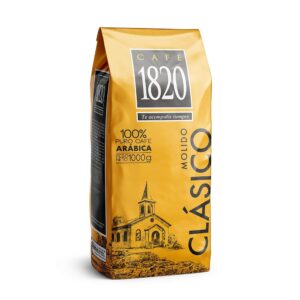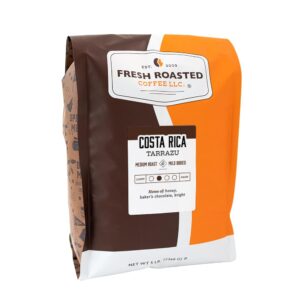Have you always wanted to travel and also are intrigued by the history of coffee and wonder how it evolves from coffee cherries growing on a bush to liquid in your cup? Costa Rican coffee plantations offer more than just tours – they provide an immersive journey into the heart of coffee farming in Costa Rica. Following are tours for you to experience Costa Rica coffee production firsthand.
Central Valley: The Birthplace
The Central Valley stands as the birthplace of Costa Rican coffee plantations, and today it hosts some of the country’s most visitor-friendly farms. Café Britt in Heredia opens its doors to curious coffee lovers, offering an engaging experience that walks you through every step of coffee production. Since 1991, they have combined education with entertainment, making complex coffee concepts easy to understand.
Just a short drive away, Hacienda Espíritu Santo spreads across 600 breathtaking acres in Naranjo. Their seven-station tour transforms visitors from casual coffee drinkers into informed enthusiasts. For those interested in sustainable practices, Finca Rosa Blanca in Santa Bárbara de Heredia showcases organic farming methods and introduces visitors to the refined art of coffee cupping.
Alajuela: Where Tradition Meets Innovation
The Alajuela region demonstrates how coffee farming in Costa Rica continues to evolve. Doka Estate, located near the majestic Poás Volcano, operates the country’s oldest wet mill. This historic plantation gives visitors a look into both traditional and modern coffee processing methods.
Nearby, Starbucks’ Hacienda Alsacia represents the future of Costa Rica coffee production. This working farm serves as both a research center and a tourist destination, highlighting sustainable farming practices that could shape the industry’s future.
La Fortuna: Family Traditions and Natural Beauty
In the shadow of the Arenal Volcano, smaller family-run plantations offer intimate glimpses into coffee cultivation. North Fields Café provides a personal touch to their tours, combining coffee education with chocolate and sugarcane experiences. The Don Juan Coffee Tour similarly offers hands-on learning opportunities, making complex farming concepts accessible to everyone.
Monteverde: Coffee in the Clouds
The unique microclimate of Monteverde’s cloud forest creates distinctive growing conditions for coffee. Here, Don Juan Coffee Tour and Café Monteverde demonstrate how different environments influence coffee characteristics. The cooperative-run Café Monteverde particularly stands out for its commitment to sustainable practices and community involvement.
Guanacaste: Hands-On Experiences
The Guanacaste region offers some of the most interactive coffee experiences. At Café Tío Leo in Liberia, visitors can participate in various stages of production, from picking to roasting. The Diria Coffee Tour in Hojancha preserves traditional farming methods, offering insights into coffee’s cultural significance in the Nicoya Peninsula.
Manuel Antonio: Coffee and More
Even in this coastal region, known primarily for its national park, you can learn about coffee cultivation. The Manuel Antonio Chocolate Tour includes coffee in its agricultural education program, showing how various tropical crops complement each other.
Planning Your Visit
When planning your coffee plantation tours, consider these tips:
- Most tours last 2-3 hours
- Morning tours often provide the best weather
- Many plantations combine coffee tours with chocolate and sugarcane experiences
- Reservations are recommended, especially during peak tourist season
- Wear comfortable walking shoes and bring a light jacket
Costa Rica’s coffee plantations offer something for everyone, from casual coffee drinkers to dedicated aficionados. Whether you’re interested in traditional farming methods, organic practices, or modern production techniques, you’ll find tours that match your interests. Each region brings its own character to coffee cultivation, making a multi-region coffee tour an excellent way to understand the diversity of Costa Rican coffee.
The country’s dedication to quality coffee production shines through in these educational experiences, making every visit to a Costa Rican coffee plantation a memorable journey into one of the world’s finest coffee-growing regions.
PureCoffeeCraft is a participant in the Amazon Services LLC Associate Program, an affiliate advertising program designed to provide a means for sites to earn advertising fees by advertising and linking to Amazon. There is no extra cost to consumers for clicking on the following links.
Understanding Costa Rican Coffee: From History to Your Cup
The story of Costa Rica and coffee runs deeper than most coffee lovers realize. In Fodor’s Travel Essential Costa Rica we explore both scholarly research and today’s top coffee products, we’ll discover how this nation’s rich coffee heritage translates into the cups we enjoy today.

Think of this as your friendly local expert giving you the inside scoop on Costa Rica. Coming out just in time for 2025 travel planning, this full-color guide is packed with all those practical details you need, but written like you’re getting advice from a well-traveled friend. It’s part of Fodor’s trusted Full-color Travel Guide series, which has been helping travelers navigate new destinations for years.
This edition balances the classic Costa Rican must-sees (like those gorgeous beaches and cloud forests) with up-to-date info about where to stay, eat, and how to get around. The full-color format means you’re not just reading about that perfect sunset spot in Manuel Antonio or the best coffee plantation tour – you’re seeing it too.
Historical Perspective: “Costa Rica After Coffee”

Lowell Gudmundson’s “Costa Rica After Coffee” presents a fascinating examination of how coffee shaped this Central American nation. The book reveals how coffee farming in Costa Rica evolved from traditional family farms to cooperative enterprises, fundamentally transforming the country’s social and economic landscape.
Gudmundson’s research uncovers how the cooperative movement revolutionized Costa Rica coffee production. Through detailed archival research and family histories, he traces the industry’s evolution from the “green and white era” of national liberation through the rise of gourmet globalization. Perhaps most intriguingly, he suggests that the very success of coffee cooperatives may have inadvertently challenged the industry’s longevity, as Costa Rica diversified into sectors like tourism.
Today’s Top Costa Rican Coffee Brands

While scholars study the history, today’s coffee drinkers can experience the results of generations of Costa Rican coffee plantations’ expertise through several outstanding brands:
Bones Coffee Company Costa Rica Single-Origin

This medium roast has earned an impressive 4.4/5 stars from over 20,000 coffee lovers. The beans deliver a gentle, low-acid profile with distinctive cocoa, nutty, and milk chocolate notes. Perfect for those who prefer a smoother cup, these whole beans showcase the subtle complexity Costa Rican coffee is famous for.
Café 1820 Classic‘
With 4.6/5 stars from nearly 2,400 ratings, this dark roast proves why Costa Rican coffee plantations maintain such high standards. The high-altitude blend offers pronounced fruity notes balanced with a rich aroma. The generous 32-oz package provides excellent value for daily drinking.

Café Britt Montecielo from Tarrazu
This medium-dark roast from the celebrated Tarrazu region exemplifies premium Costa Rica coffee production. Earning 4.6/5 stars, this kosher and gluten-free option comes in a convenient three-pack of 12-oz bags. The careful processing preserves the region’s characteristic flavor profile.

Fresh Roasted Coffee Tarrazu
Available in a substantial 5-pound bag, this medium roast has satisfied over 6,000 customers with its consistent quality, earning 4.4/5 stars. The whole beans allow coffee enthusiasts to experience the full potential of Tarrazu’s premium growing region.
The Connection Between Past and Present
From the cooperative movements documented in Gudmundson’s research to today’s specialty coffee market, we see how tradition and innovation combine. Modern brands maintain the quality standards established by generations of farmers while adapting to contemporary consumer preferences.
Each brand maintains the high standards that have made Costa Rica synonymous with premium coffee, while offering distinct characteristics to suit different preferences and brewing styles.